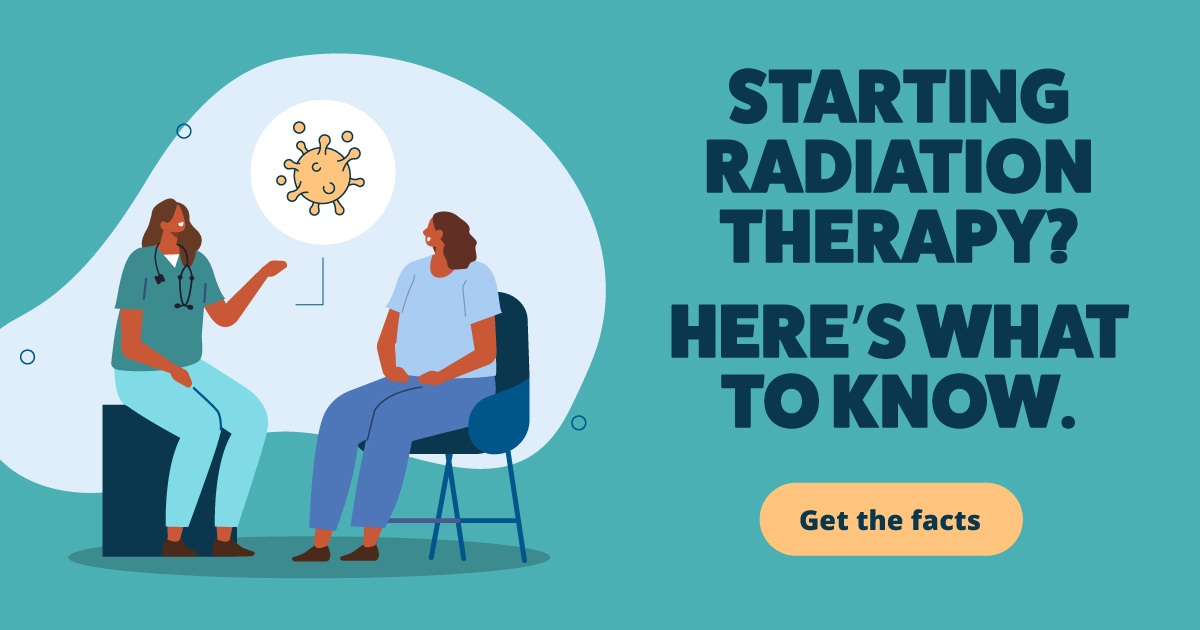Health library
Back to health library
What is radiation therapy?
Radiation therapy is a common treatment for cancer. If you or a loved one is starting this treatment, your doctor can help you understand your individual care plan. But knowing these basic facts may help you feel more prepared.
Radiation kills cancer cells
Radiation therapy uses high-energy rays to damage the DNA in cancer cells, which stops them from growing and dividing. The cancer cells die after days or weeks. The body then breaks them down and removes them. Cancer cells may keep dying for weeks after the treatment ends.
The radiation can be outside or inside the body
With external beam radiation, a machine aims radiation at the cancer. With internal radiation, a radiation source (such as seeds or capsules) is placed close to or in the tumor. The type of radiation therapy used depends on factors such as the type of tumor being treated and its location.
It's often used with chemotherapy or surgery
Radiation may be used by itself to shrink or destroy a tumor. But it's often part of a bigger treatment plan. For instance, it might be used before surgery to shrink a tumor so that it is easier to remove. Or it might be given after surgery to destroy any cancer cells that remain.
It's usually given over time
Radiation therapy is typically given in small doses over several weeks. A common treatment schedule is once a day, five days a week. This schedule allows healthy cells time to recover between treatments. But sometimes higher doses of radiation are used. This can reduce the number of weeks of treatment.
Your individual treatment plan will depend on your cancer type and other factors.
Modern radiation therapy is more precise than ever
Advanced computer planning and imaging tools help doctors target tumors with precision. This allows the most radiation to reach the cancer-while protecting healthy tissue and causing fewer side effects. It can also allow higher doses of radiation to be used, which may mean shorter treatment times for you.
Side effects are typically temporary
Radiation therapy can damage healthy cells as well as cancer. This can lead to side effects like skin changes, hair loss, mouth sores or fatigue. The side effects can vary, depending on the treatment area, the radiation dose, your general health and other factors.
The good news? Side effects can usually be managed with help from your cancer team.
Is cancer making it hard to eat? These strategies can help you get the nutrition you need.
Reviewed 9/12/2025
